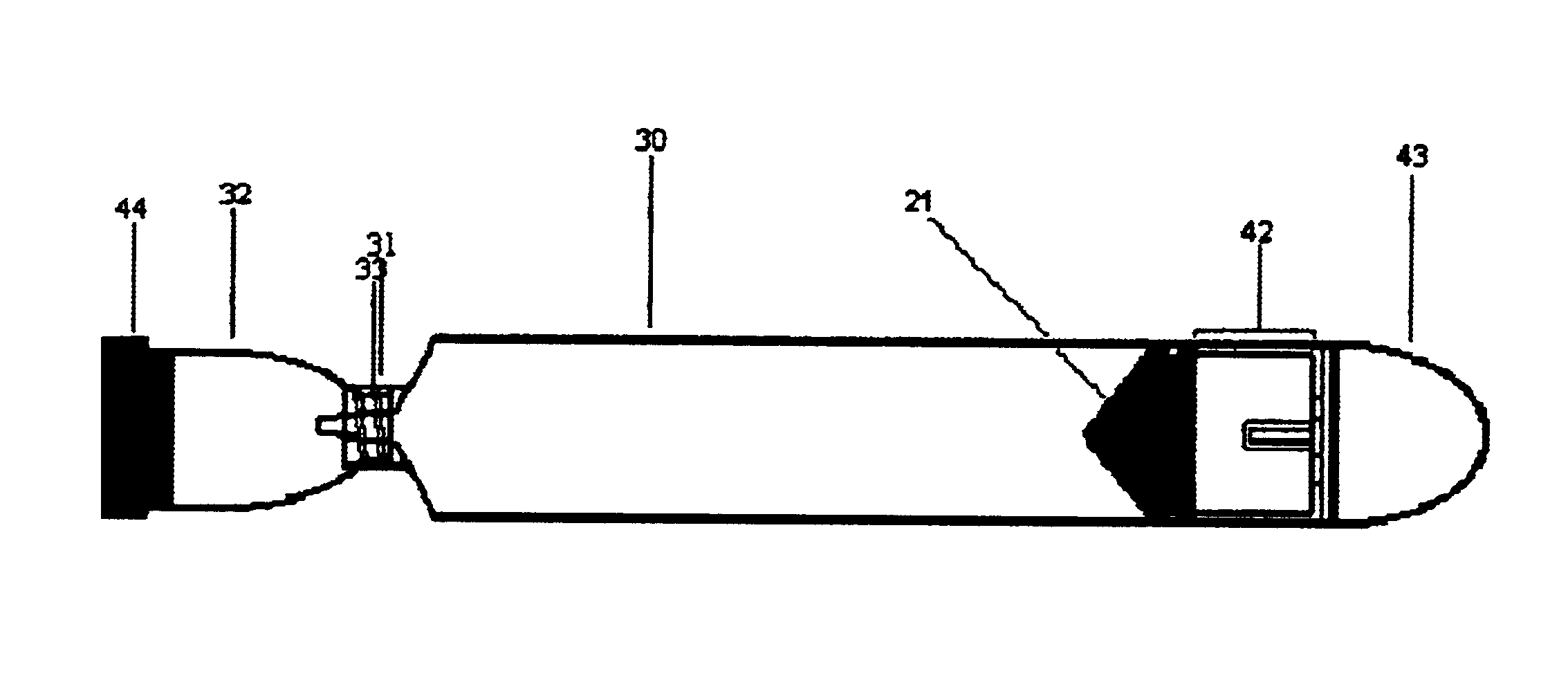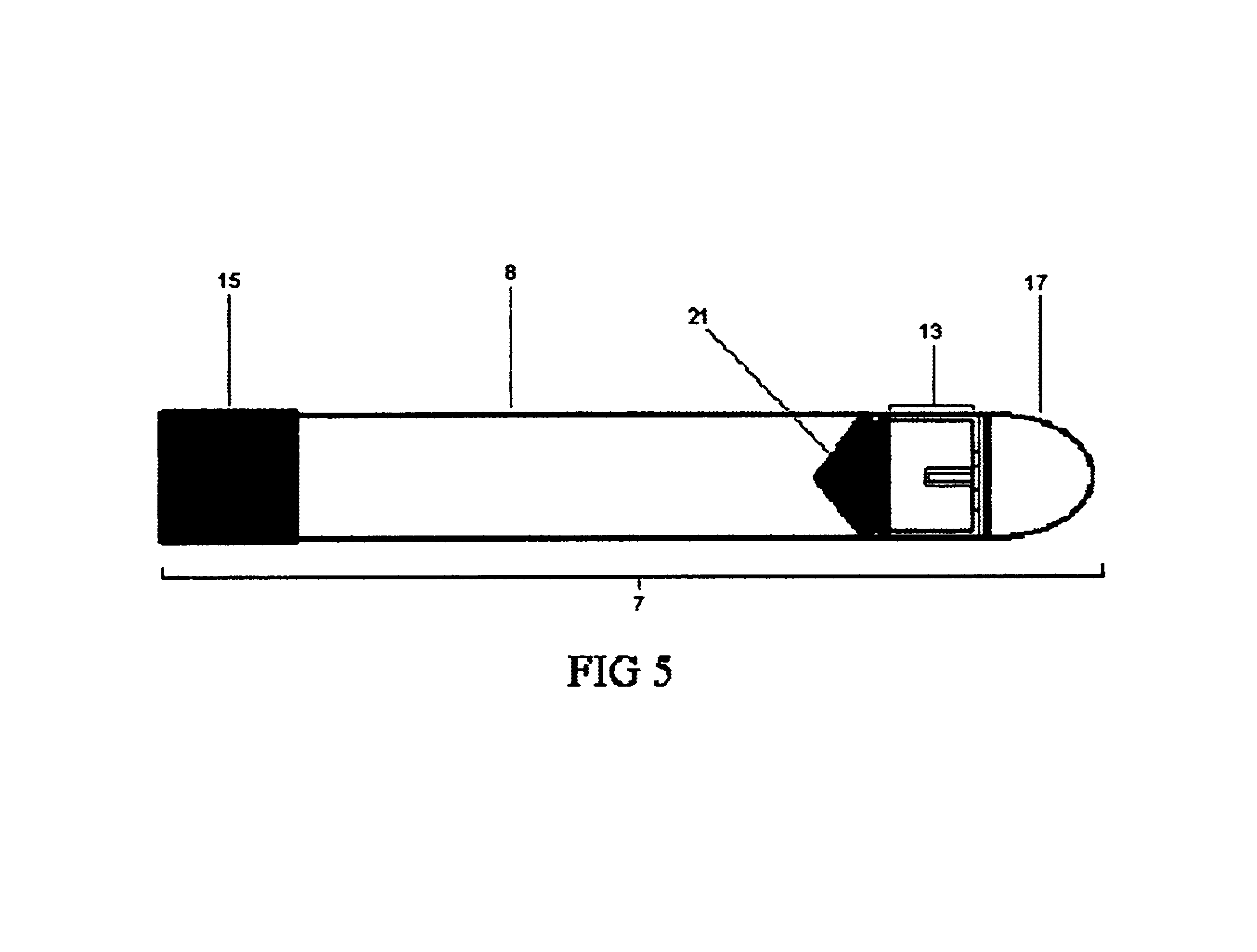Method of body fluid specimen collection
a body fluid and specimen collection technology, applied in medical science, packaging, diagnostics, etc., can solve the problems of increasing the probability of contaminant inclusion with the blood specimen, false positive, and prior art methods that draw blood directly into evacuated culture vessels are subject to some frequency of contact with the surface of culture vessels, so as to achieve convenient and convenient transfer, the effect of ensuring the safety of the transfer
- Summary
- Abstract
- Description
- Claims
- Application Information
AI Technical Summary
Benefits of technology
Problems solved by technology
Method used
Image
Examples
first embodiment
[0080]The vessel plunger 13 should have a cylindrical body having a diameter of roughly 1.3 cm to allow for its entry into the vessel body 8 and to allow it to move freely within the vessel body 8 when not held in place by the plunger lock 17. Continuous with the body at one end will be the rubber seal hold 20. In the first embodiment the rubber seal hold 20 will be a plastic disk over which fits a rubber seal 21, the second seal. This type of attachment is well known in the art of making syringes. The strength of the attachment may also be augmented using an adhesive in order to prevent disengagement of the rubber seal 21 from the hold 20 during assembly. The rubber seal 21 provides the plunger with means for sealing with the vessel body 8. At the other end, the plunger 13 will also contain the plunger grooves 12. As illustrated in FIGS. 9, 10, 11, and 12, the grooves 12 correspond in dimensions and orientation to the body's ridges 11, such that when the grooves 12 and ridges 11 ar...
third embodiment
[0091]A third embodiment for the collection vessel will also be described here. This embodiment is preferred because it uses a transfer needle as opposed to the transfer device 29 in a method of transfer the second body fluid specimen as will be described later.
[0092]The third embodiment comprises: a hollow body having a first and second end; a first seal at said first end; a plunger disposed within said hollow body between said first end and said second end; said plunger providing a second seal; a plunger lock coupled to said plunger; said plunger lock being configured to selectively maintain said plunger at said second end when at least a portion of said hollow body between said first seal and said second seal is at least partially evacuated; an airtight junction that interrupts said hollow body forming a first section and second section; said first section having said first seal; said second section having said plunger and said plunger lock; said plunger lock can further be confi...
fifth embodiment
[0131]A third, fourth, and fifth embodiment of the method for collecting a body fluid specimen is described here, comprising the steps of:[0132]a. preparing the site for puncture using an antiseptic;[0133]b. piercing the prepared puncture site using the fluid collection needle;[0134]c. collecting the first body fluid specimen using the sterile evacuated specimen tube;[0135]d. collecting the second body fluid specimen using an embodiment of the collection vessel;[0136]e. transferring the second body fluid specimen to the evacuated culture vessel using the transfer device.
[0137]As with the first two embodiments, the step of preparing the puncture site may use any one or a combination of the antiseptics listed, but as explained earlier must be capable of aiding in the elimination of an adequate quantity of contaminants. The step of piercing the skin the puncture site may use any of the listed devices for piercing the puncture site. These embodiments also use contaminant redirection as ...
PUM
 Login to View More
Login to View More Abstract
Description
Claims
Application Information
 Login to View More
Login to View More - R&D
- Intellectual Property
- Life Sciences
- Materials
- Tech Scout
- Unparalleled Data Quality
- Higher Quality Content
- 60% Fewer Hallucinations
Browse by: Latest US Patents, China's latest patents, Technical Efficacy Thesaurus, Application Domain, Technology Topic, Popular Technical Reports.
© 2025 PatSnap. All rights reserved.Legal|Privacy policy|Modern Slavery Act Transparency Statement|Sitemap|About US| Contact US: help@patsnap.com



